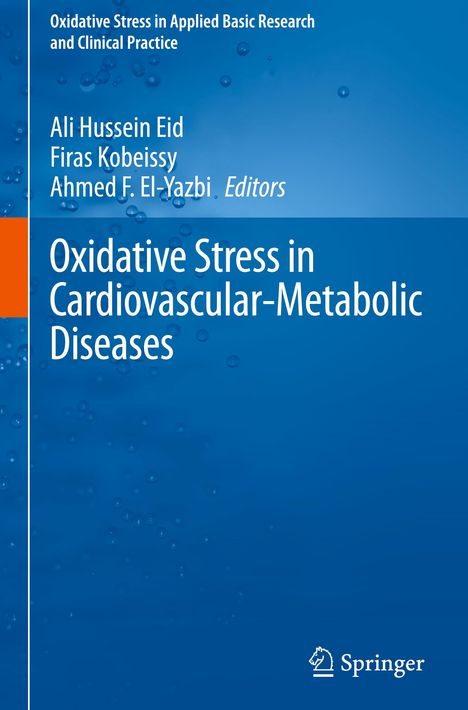Oxidative Stress in Cardiovascular-Metabolic Diseases, Gebunden
Oxidative Stress in Cardiovascular-Metabolic Diseases
(soweit verfügbar beim Lieferanten)
- Herausgeber:
- Ali Hussein Eid, Ahmed F. El-Yazbi, Firas Kobeissy
- Verlag:
- Springer Nature Switzerland, 08/2024
- Einband:
- Gebunden, HC runder Rücken kaschiert
- Sprache:
- Englisch
- ISBN-13:
- 9783031621307
- Artikelnummer:
- 11939906
- Umfang:
- 312 Seiten
- Nummer der Auflage:
- 2024
- Ausgabe:
- 2024
- Gewicht:
- 635 g
- Maße:
- 241 x 160 mm
- Stärke:
- 23 mm
- Erscheinungstermin:
- 8.8.2024
- Hinweis
-
Achtung: Artikel ist nicht in deutscher Sprache!
Klappentext
The book dissects the role of oxidative stress in the pathogenesis of the leading causes of global morbidity and mortality, i. e. cardiovascular and metabolic diseases. The chapters discuss topics related to the role reactive oxygen species (ROS) play in hypertension, atherosclerosis, diabetes, obesity and related pathologies. One chapter discusses the clinical efficacy and safety considerations of GLP-1 receptor agonists and SGLT-2 inhibitors in obesity management and the associated cardiovascular complications. Another chapter discusses the context-dependent roles of matrix metalloproteases, and how their activity can be modulated and utilized for the development of improved drugs for cardiometabolic diseases. Moreover, how ROS and aging interplay to precipitate cardiovasculo-metabolic disease is discussed and highlighted. Similarly, how sex and sepsis interplay in the context of cardiorenal disease is teased out in one of the chapters. Preventive measures that can abrogate ROS-induced cardiovasclo-metabolic disease are discussed and clarified in the hope of reducing such a debilitating battery of diseases. Another chapter is fully dedicated to the roles of ROS in atherosclerosis, while another chapter deals with mechanisms and effect of ROS on various phenotypes of adipose tissues in the context of cardiovasculo-metabolic disease. A chapter also discusses the link between traumatic brain injury (TBI) and cardiovascular impairments, and how ROS plays a significant role in TBI-induced cardiovascular disease. A section dedicated to antioxidants as potential therapy is also included. Given the complexity of the mechanisms implicated in ROS-modulated responses, it remains challenging to assert a conclusive argument and pre-determined regimen for incorporating antioxidants into conventional therapies. In all of the chapters, the molecular, cellular, genetic, and pharmacological mechanisms implicated are covered from an applied science perspective.
This is an ideal book for basic researchers in the biomedical field, graduate students in biological and biomedical fields, medical students, instructors in medical and graduate schools, and professionals working for pharmaceutical companies.


